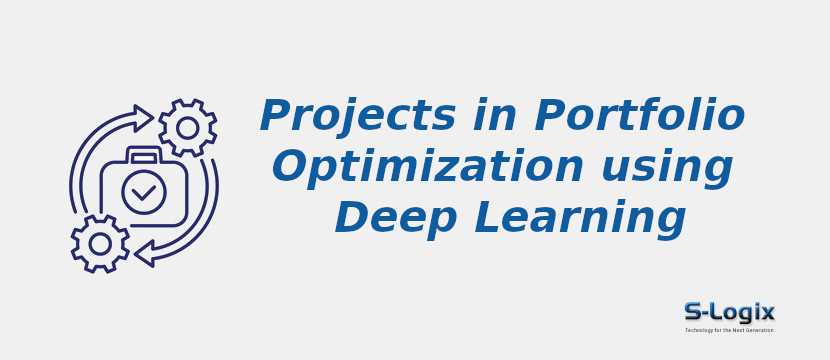Project Background:
Portfolio optimization emerges from the growing complexity and dynamism of financial markets, which necessitate advanced tools to construct and manage investment portfolios. Traditional methods for portfolio optimization often rely on static statistical models and assume linear relationships between assets, making them ill-suited for capturing the intricate, non-linear patterns inherent in financial data. In portfolio optimization, deep learning models can analyze large amounts of historical market data, identify hidden patterns, and dynamically adjust portfolio allocations in response to changing market conditions. This approach aims to enhance the risk-adjusted returns of investment portfolios by providing more accurate and adaptive strategies.
Problem Statement
- The problem in portfolio optimization that motivates the incorporation of deep learning lies in the limitations of traditional methods to effectively capture and adapt to the complex dynamics of financial markets.
-
Conventional portfolio optimization models often rely on simplifying assumptions, failing to adequately represent the intricate patterns and non-linear dependencies in real-world financial data.
-
The challenge is to develop a portfolio optimization framework that harnesses the power of deep learning to autonomously learn and adapt to the evolving patterns within financial datasets.
-
It addresses non-linearity issues, incorporating diverse data sources and dynamically adjusting portfolio weights to enhance returns while managing risk effectively.
-
By addressing these challenges, this project work seeks to contribute to more robust and adaptive portfolio optimization strategies that align with the complexities of contemporary financial markets.
Aim and Objectives
- This project aims to improve the risk-adjusted returns in dynamic and complex financial markets.
-
Develop deep learning models for analyzing historical financial data and extracting intricate patterns.
-
Incorporate non-linear relationships and dependencies within portfolio optimization frameworks.
-
Dynamically adjust portfolio allocations in response to changing market conditions using real-time data.
-
Enhance risk management by leveraging deep learning to capture and respond to market volatility.
-
Evaluate the performance of deep learning-based portfolio optimization against traditional methods.
Contributions to Portfolio Optimization using Deep Learning
1. Introduces deep learning models that excel at recognizing intricate patterns within historical financial data, providing a more nuanced understanding of market dynamics.
2. Develops models capable of dynamically adjusting portfolio allocations in real-time, responding to changing market conditions and optimizing risk-adjusted returns.
3. Addresses the limitations of traditional linear models by incorporating non-linear relationships and dependencies into the portfolio optimization framework, capturing more accurate representations of market behavior.
4. Utilizes deep learning to enhance risk management strategies, allowing for more effective mitigation of portfolio volatility and improved resilience against market uncertainties.
5. Enhances the adaptability of portfolio strategies to diverse market scenarios and asset classes, improving the robustness of investment decisions.
6. Contributes to the broader advancement of adaptive and robust investment strategies, offering practical insights for navigating the complexities of contemporary financial markets.
Deep Learning Algorithms for Portfolio Optimization
- Deep Q-Networks (DQN)
-
Deep Deterministic Policy Gradients (DDPG)
-
Long Short-Term Memory networks (LSTMs)
-
Gated Recurrent Units (GRUs)
-
Generative Adversarial Networks (GANs)
-
Variational Autoencoders (VAEs)
-
Neural Autoregressive Distribution Estimation (NADE)
-
Deep Boltzmann Machines (DBMs)
-
Temporal Convolutional Networks (TCNs)
Datasets for Portfolio Optimization
- Sharpe-Tilly 5 Asset Portfolio Data
-
Fama-French 3-Factor Data
-
NASDAQ-100 Stock Data
-
MSCI World Index Data
-
Yahoo Finance Historical Stock Data
-
Quandl Financial and Economic Data
-
Alpha Vantage API Financial Data
Performance Metrics
- Sharpe Ratio
-
Sortino Ratio
-
Maximum Drawdown
-
Annualized Return
-
Standard Deviation of Portfolio Returns
-
Beta (Systematic Risk)
-
Alpha (Excess Return)
-
Treynor Ratio
-
Information Ratio
-
Portfolio Turnover Ratio
Software Tools and Technologies
Operating System: Ubuntu 18.04 LTS 64bit / Windows 10
Development Tools: Anaconda3, Spyder 5.0, Jupyter Notebook
Language Version: Python 3.9
Python Libraries:
1. Python ML Libraries:
- Scikit-Learn
- Numpy
- Pandas
- Matplotlib
- Seaborn
- Docker
- MLflow
2. Deep Learning Frameworks:
- Keras
- TensorFlow
- PyTorch
